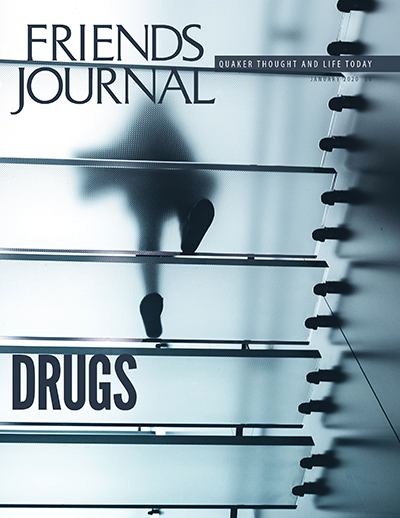Way—Roger Darlington Way, 100, on June 2, 2019, in Foxdale Village, State College, Pa. Roger was born on November 7, 1918, on a third-generation family farm in rural Stormstown, Pa., the second of Ina Alice Whitely and Darlington Hoopes Way’s seven children. He attended a one-room school, and all his life remembered the sight of a dollar bill fallen from a pocket to the kitchen floor—dollars were so rare.
He earned bachelor’s (1940) and master’s (1942) degrees in horticulture from Pennsylvania State University and then spent four years in a Civilian Public Service camp in Bowie, Md. Following the war, he did American Friends Service Committee relief work in rural China in the Friends Ambulance Unit for two and a half years, rehabilitating and operating mission hospitals and helping local people create textile and brick-making cooperatives.
He witnessed a rabid man’s prolonged suffering and death inside a cage; the rerouting of the Yellow River, one shovelful at a time; and a civil war between the Chinese Nationalist army and the Communist army with people caught in between. He returned home via the Indian Ocean to complete his trip around the world.
In 1953 he received a doctorate in pomology from Cornell University and became a research scientist at Cornell’s Agricultural Experiment Station in Geneva, N.Y., breeding thousands of apple seedlings each spring. That year, he married Quaker Mary Elizabeth Otis, under the care of Poplar Ridge Meeting in Cayuga County, N.Y. They raised their four children in the rural Ontario County town of Stanley, N.Y., instilling in them Quaker values of peace and integrity and his confidence in hard work, determination, and self-reliance. The family took annual vacations, driving to Mexico, the West Coast, and Alaska. In 1968, during his sabbatical, they camped for two months in Western Europe and then lived for two months in Tunbridge Wells, England, while he worked with scientists at the East Malling Research Station in Kent.
The family worshiped with Finger Lakes Meeting on Canandaigua Lake, N.Y. (since laid down). Later, they attended Farmington (N.Y.) Friends Church until 1973. They often hosted international scientists; and two foster children, a family fleeing the war in El Salvador on their way to Canada, and several high school foreign exchange students found sanctuary in their home.
He and his associates introduced sixteen varieties of apple, seven varieties of cherry, and one variety of elderberry based on their taste, size, texture, and disease and insect resistance. The Jonagold and Empire apples brought him worldwide recognition. In 1983, Charles Osgood’s CBS Sunday Night News featured him and his colleague Kenneth Livermore. He was featured in People magazine and in Trans World Airlines’ magazine Ambassador; quoted in the New York Times; and often appeared on Doc and Katy Abraham’s Rochester, NY-based home gardening radio and television programs. He worked at Cornell for 16 years following his official 1983 retirement.
In the late 1980s, he and Mary were instrumental in founding Central Finger Lakes Meeting in Geneva, N.Y., where they were active members until they transferred to State College (Pa.) Meeting in 2002.
His enthusiasm and his dry humor drew people in. Speaking truth succinctly and sometimes bluntly, he staunchly opposed all war, particularly U.S. military aggression and oppression in the world, and actively encouraged one of his daughters in her leading to civilly resist the continued operation of the U.S. Army’s School of the Americas, even though it would bring her conviction and imprisonment. Roger celebrated his 100th birthday with 60 family members and friends seven months before his death.



Comments on Friendsjournal.org may be used in the Forum of the print magazine and may be edited for length and clarity.